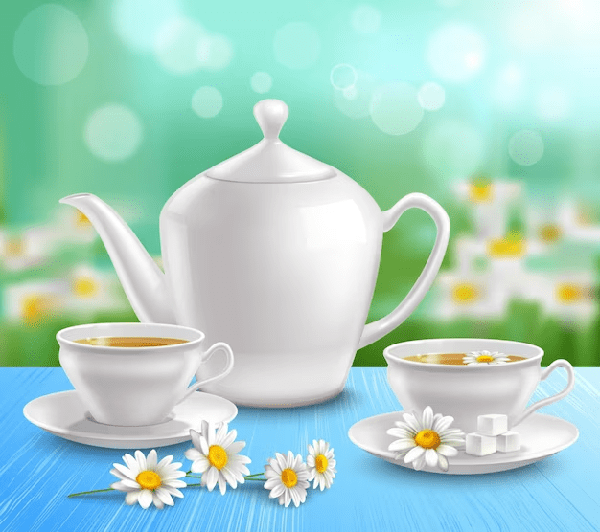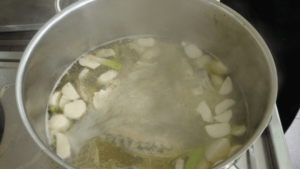Tea pot- There are various types of tea pots, each designed to cater to different preferences, traditions, and types of tea. Here are some common types:
- Ceramic Tea Pots:
- Material: Made from ceramic or porcelain.
- Advantages: Retains heat well, comes in various designs and colors.
- Glass Tea Pots:
- Material: Made from heat-resistant glass.
- Advantages: Allows you to visually appreciate the tea brewing process, easy to clean.
- Cast Iron Tea Pots (Tetsubin):
- Material: Made from cast iron.
- Advantages: Excellent heat retention, often used for brewing certain types of green tea.
- Stainless Steel Tea Pots:
- Material: Made from stainless steel.
- Advantages: Durable, doesn’t retain flavors, and easy to clean.
- Yixing Clay Tea Pots:
- Material: Made from a special type of clay from the Yixing region in China.
- Advantages: Enhances the flavor of tea over time, especially popular for oolong and pu-erh teas.
- Porcelain Tea Pots:
- Material: Made from high-fired clay.
- Advantages: Lightweight, doesn’t absorb flavors, good for delicate teas.
- Electric Tea Pots:
- Type: Can be made from various materials but includes an electric heating element.
- Advantages: Convenient for heating water quickly, often equipped with temperature control features.
- Travel Tea Pots:
- Design: Compact and often made from materials like stainless steel or heat-resistant plastic.
- Advantages: Portable and suitable for brewing tea on the go.
- Mug with Infuser:
- Design: A combination of a mug and a built-in tea infuser.
- Advantages: Convenient for single servings, eliminates the need for a separate tea pot.
- Gaiwan:
- Type: Not exactly a tea pot, but a traditional Chinese lidded bowl used for steeping tea.
- Advantages: Suitable for multiple infusions, especially for Chinese tea ceremonies.
When choosing a tea pot, consider the type of tea you’ll be brewing, your personal preferences, and the style of the tea pot that suits your taste. Each type has its unique characteristics that can affect the brewing process and the flavor of your tea.
What is Tea pot
A tea pot is a vessel designed for steeping or brewing tea. It typically consists of a handle for easy pouring, a spout for pouring the brewed tea, a lid to cover the top, and a chamber where the tea leaves are placed to infuse in hot water. The design of tea pots can vary widely based on cultural, historical, and stylistic influences.
Tea pots come in various materials, such as ceramic, porcelain, glass, cast iron, stainless steel, and clay. Each material has its own unique properties that can affect the brewing process and the flavor of the tea. For example, cast iron tea pots are known for their excellent heat retention, while glass tea pots allow you to visually appreciate the tea brewing.
Tea pots are an essential part of tea culture in many societies and are used for various types of tea ceremonies. The choice of a tea pot can also be influenced by the type of tea being brewed, as different teas may require different brewing temperatures and techniques.
In addition to traditional tea pots, there are also modern variations that include features such as built-in infusers, electric heating elements, and travel-friendly designs. The right tea pot for you depends on your personal preferences, the type of tea you enjoy, and the cultural or functional aspects you value in a tea pot.
Who is Required Tea pot
It appears there might be confusion. A tea pot is not a person; it’s an inanimate object used for brewing and serving tea. If you are asking about a specific tea pot brand or designer, please provide more details so I can better assist you. Otherwise, if you have questions about tea pots in general, their types, uses, or anything related to them, feel free to ask!
When is Required Tea pot

It seems like there might still be a bit of confusion or an error in the phrasing of the question. If you’re asking about when to use a tea pot, the answer is that you can use a tea pot whenever you want to brew and serve tea. Tea pots are versatile and can be used for various types of tea, and they come in different designs and materials to suit different preferences.
If you have a more specific question or if there’s a particular aspect you’re curious about, please provide additional details so I can offer more targeted information.
Where is Required Tea pot
Tea pots can be found in various places, depending on where you prefer to shop. Here are some common locations where you can find tea pots:
- Retail Stores: Many kitchenware and home goods stores carry a selection of tea pots. This includes department stores, specialty kitchen stores, and stores that focus on home goods.
- Tea Shops: Specialty tea shops often carry a variety of tea pots to complement their selection of teas. These can be traditional pots or those specifically designed for certain types of tea.
- Online Retailers: You can find a wide range of tea pots on online marketplaces and retail websites. This allows you to explore different styles, materials, and brands, and you can often read reviews from other customers.
- Antique Shops: If you’re interested in vintage or unique tea pots, antique shops or flea markets can be a great place to discover one-of-a-kind pieces.
- Department Stores: Larger department stores often have a kitchenware section where you can find a variety of tea pots.
- Specialty Kitchenware Stores: Stores that specialize in kitchenware and cooking utensils may also have a selection of tea pots.
When searching for a tea pot, consider the type of tea you enjoy, the material you prefer, and your budget. This will help you narrow down your options and find the tea pot that best suits your needs.
How is Required Tea pot
It seems like there might still be a bit of confusion or a missing detail in your question. If by “how is required tea pot,” you are asking about the characteristics or features you should look for in a tea pot, here are some factors to consider:
- Material: Tea pots come in various materials, including ceramic, glass, cast iron, stainless steel, and more. The material can affect heat retention, durability, and the flavor of the tea.
- Size: Consider the size based on your brewing needs. A larger pot may be suitable for serving a group, while a smaller one is ideal for personal use.
- Design: Choose a design that suits your style and complements your kitchen or tea-drinking area. Some people prefer traditional or ornate designs, while others may prefer modern and minimalist styles.
- Functionality: Some tea pots come with built-in infusers or strainers, making it easy to brew loose tea leaves. Others may have special features like temperature control for specific types of tea.
- Heat Retention: If you enjoy sipping your tea slowly, a tea pot with good heat retention is beneficial. Materials like cast iron are known for their excellent heat retention.
- Ease of Cleaning: Consider how easy the tea pot is to clean, especially if you plan to brew different types of tea with distinct flavors.
- Budget: Tea pots come in a wide range of prices. Determine your budget and find a tea pot that fits within it while meeting your desired specifications.
If you have a more specific question or if there’s a particular aspect of the tea pot you’re inquiring about, please provide additional details so I can offer more tailored information.
Case Study on Tea pot
InnovTea Pot – Brewing Tradition with a Modern Twist
Background: InnovTea, a company passionate about blending tradition with innovation in the world of tea, decided to create a revolutionary tea pot to meet the evolving needs of tea enthusiasts. The goal was to design a product that combines functionality, aesthetics, and a touch of modern technology.
Objective: To develop and market the InnovTea Pot as a versatile and user-friendly tea pot that enhances the tea brewing experience.
Development Process:
- Market Research:
- Conducted extensive market research to identify current trends in tea consumption and preferences.
- Analyzed customer reviews, identifying pain points with existing tea pots in the market.
- Design Concept:
- Collaborated with industrial designers to create a unique and ergonomic tea pot design.
- Incorporated heat-resistant borosilicate glass for transparency and durability.
- Functionality:
- Integrated a removable stainless steel infuser for loose tea leaves.
- Added a temperature control feature for brewing different types of tea.
- Technological Integration:
- Introduced a mobile app that connects to the tea pot via Bluetooth.
- The app allows users to customize brewing temperatures and receive notifications when the tea is ready.
- Materials and Sustainability:
- Ensured the materials used were eco-friendly and sustainable.
- Used recyclable packaging to appeal to environmentally conscious consumers.
Marketing Strategy:
- Branding:
- Developed a brand identity emphasizing the blend of tradition and innovation.
- Named the product “InnovTea Pot” to highlight its unique features.
- Target Audience:
- Identified target demographics as tech-savvy tea enthusiasts, professionals, and millennials who value a modern lifestyle.
- Social Media Campaign:
- Launched a comprehensive social media campaign showcasing the design process, features, and benefits of the InnovTea Pot.
- Engaged influencers in the tea and lifestyle niche to create buzz.
- Retail Partnerships:
- Established partnerships with specialty tea shops, kitchenware stores, and online retailers for distribution.
- Customer Feedback:
- Encouraged pre-orders with early access for feedback.
- Implemented improvements based on initial customer reviews.
Results:
- Sales Success:
- The InnovTea Pot gained significant attention and exceeded sales expectations.
- Positive reviews emphasized the product’s functionality, design, and technological integration.
- Brand Recognition:
- InnovTea established itself as a brand that values innovation in traditional practices.
- The success of the InnovTea Pot contributed to increased brand recognition.
- Expansion and Iteration:
- Used the success of the InnovTea Pot to develop a line of tea-related products.
- Continued to iterate on the design based on customer feedback.
Conclusion: The InnovTea Pot case study illustrates how a combination of market research, innovative design, and strategic marketing can lead to the successful development and launch of a unique product in a competitive market.
This is a fictional case study, and the details are created for illustrative purposes. In a real-world scenario, a case study would involve actual data, feedback, and results obtained during the product development and marketing process.
White paper on Tea pot
Evolution of Tea Pots – Blending Tradition with Innovation
Executive Summary:
Tea, a beverage with a rich global history, has been a cornerstone of cultural practices for centuries. The tea pot, an integral tool in the tea-drinking ritual, has undergone significant evolution. This white paper delves into the history, current trends, and the future of tea pots, with a focus on the marriage of tradition and innovation in their design and functionality.
1. Introduction: The Cultural Significance of Tea Pots
Tea pots have been an essential element in various tea-drinking cultures, symbolizing hospitality, connection, and the art of brewing. From the traditional Chinese Yixing clay pots to the sophisticated British bone china tea pots, each culture has contributed to the diverse landscape of tea pot design.
2. Traditional vs. Modern Design: A Balancing Act
While traditional designs continue to hold a special place in the hearts of tea enthusiasts, modern tea pots have emerged, incorporating innovative materials, shapes, and features. The challenge lies in maintaining the essence of tradition while meeting the evolving needs of contemporary consumers.
3. Materials: From Clay to Smart Ceramics
Tea pots have evolved from traditional materials like clay and cast iron to contemporary choices such as borosilicate glass and stainless steel. The use of smart ceramics, integrating technology seamlessly, represents a cutting-edge approach to design, catering to the preferences of tech-savvy consumers.
4. Innovative Features: Beyond the Basics
Modern tea pots go beyond the fundamental role of steeping tea leaves. Innovations such as built-in temperature control, Bluetooth connectivity, and integrated infusers provide users with unprecedented control over the brewing process, enhancing both the art and science of tea preparation.
5. Sustainability in Tea Pot Design
With the growing emphasis on sustainability, the tea pot industry has witnessed a shift towards eco-friendly materials, recyclable packaging, and a focus on reducing environmental impact. This section explores how sustainability has become a key consideration in both design and manufacturing.
6. Market Trends and Consumer Preferences
Analyzing current market trends and consumer preferences provides valuable insights into the direction of tea pot design. Understanding the demands of different demographics, from traditional tea connoisseurs to the younger, eco-conscious generation, is crucial for manufacturers and designers.
7. Case Studies: Successful Innovations in Tea Pot Design
Examining case studies of tea pot innovations, such as the integration of mobile apps, ergonomic designs, and unique materials, showcases successful strategies that have resonated with consumers and contributed to the evolution of the tea pot industry.
8. The Future of Tea Pots: Integrating Tradition and Technology
Looking ahead, the future of tea pots lies in the seamless integration of tradition and technology. Smart tea pots, sustainable materials, and personalized brewing experiences are poised to define the next chapter in the evolution of this timeless beverage accessory.
9. Conclusion: Brewing the Future
The tea pot, a vessel that has stood the test of time, continues to evolve, driven by a delicate balance between tradition and innovation. As technology and design converge, the tea pot remains a symbol of the enduring allure of tea and the timeless rituals that accompany its consumption.
This white paper aims to provide a comprehensive overview of the evolution of tea pots, exploring the intricate interplay between tradition and innovation that shapes the modern tea pot landscape.
Please note that this white paper is a fictional creation for illustrative purposes and is not based on real-world data. In an actual white paper, each section would be supported by thorough research and references.
Industrial Application of Tea pot
The industrial application of tea pots goes beyond the traditional use in homes and tea ceremonies. In industrial settings, specialized tea pots or tea-brewing systems may be employed for various purposes. Here are a few industrial applications:
- Tea Processing Factories:
- Industrial-sized tea pots and brewing systems are used in tea processing factories. These systems can handle large quantities of tea leaves to produce bulk amounts of brewed tea for further processing.
- Quality Control Labs:
- In the tea industry, quality control is crucial. Industrial-scale tea pots may be used in labs for tasting sessions and quality assessments. This ensures consistency and adherence to flavor profiles.
- Tea Extract Production:
- Industrial-scale tea pots are utilized in the production of tea extracts. These extracts can be used in various products, including beverages, food items, and even cosmetic formulations.
- Tea Bag Manufacturing:
- Automated tea pot systems are integrated into production lines for manufacturing tea bags. These systems precisely control brewing parameters to ensure uniformity in flavor and quality for each tea bag produced.
- Food and Beverage Production:
- Some industrial kitchens and food production facilities use large tea pots for brewing teas that are incorporated into food products or served as beverages.
- Hospitality and Events:
- In large-scale events, conferences, or catering services, industrial tea pots may be used to efficiently cater to a large number of people. These may include automated systems for brewing and dispensing tea.
- Tea Infused Product Manufacturing:
- Industries producing tea-infused products, such as teas blended with herbs, fruits, or spices, may use specialized tea pot systems to brew these unique combinations at scale.
- Research and Development:
- Industrial-grade tea pots can be used in research and development laboratories for experimenting with different brewing parameters, exploring new tea blends, and optimizing production processes.
- Tea Vending Machines:
- Automated vending machines that dispense freshly brewed tea often incorporate industrial-scale tea pot systems. These machines need to handle large volumes while maintaining consistent quality.
- Tea in Pharmaceuticals:
- In the pharmaceutical industry, where herbal teas and infusions are sometimes used for medicinal purposes, industrial tea pot systems may be employed to ensure standardized and controlled production.
These industrial applications highlight the versatility of tea pots beyond personal use. They play a role in various stages of tea production, quality control, and the creation of tea-infused products across different industries. The design and features of these industrial tea pot systems are often tailored to the specific needs of the respective applications.





